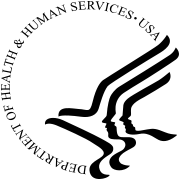United States Department of Health and Human Services
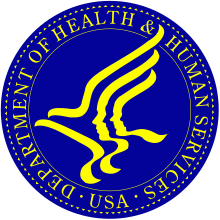 Seal of the U.S. Department of Health and Human Services | |
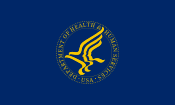 Flag of the U.S. Department of Health and Human Services | |
|
Hubert H. Humphrey Building, Department Headquarters | |
| Department overview | |
|---|---|
| Formed |
April 11, 1953 (as Department of Health, Education, and Welfare) May 4, 1980 (as United States Department of Health and Human Services) |
| Preceding agencies |
|
| Jurisdiction | Federal government of the United States |
| Headquarters |
Hubert H. Humphrey Building Washington, D.C., U.S. |
| Employees | 79,540 (2015)[1] |
| Department executives | |
| Website |
www |
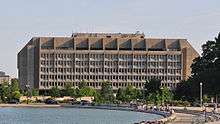
The United States Department of Health and Human Services (HHS), also known as the Health Department, is a cabinet-level department of the U.S. federal government with the goal of protecting the health of all Americans and providing essential human services. Its motto is "Improving the health, safety, and well-being of America".[2] Before the separate federal Department of Education was created in 1979, it was called the Department of Health, Education, and Welfare (HEW).
History
Federal Security Agency
The Federal Security Agency (FSA) was established on July 1, 1939, under the Reorganization Act of 1939, P.L. 76-19. The objective was to bring together in one agency all federal programs in the fields of health, education, and social security. The first Federal Security Administrator was Paul V. McNutt.[3]
The new agency originally consisted of the following major components: (1) Office of the Administrator, (2) Public Health Service (PHS), (3) Office of Education, (4) Civilian Conservation Corps, and (5) Social Security Board.
Origins
- These components, however, are traceable to the early days of the Republic. On July 16, 1798, President John Adams signed an act creating the Marine Hospital Service to furnish treatment to sick and disabled American merchant seamen. On April 29, 1878, the first Federal Quarantine Act enlarged the Service's responsibilities to include prevention of epidemics from abroad. On August 14, 1912, the name was changed to the Public Health Service (PHS). On May 26, 1930, the Hygienic Laboratory of the Service was redesignated the National Institutes of Health (NIH). PHS was transferred from the Treasury Department to the FSA in 1939.
- Even though the first steps toward public education were taken in 1647 by the Massachusetts Bay Colony and land was set aside for public schools by the Congress of the Confederation in 1785, the idea of universal, free public schools did not become firmly established until the Civil War era. Even then, only half of the States had an efficient public school system. In 1867, Congress established the Department of Education to promote the cause of education and collect and disseminate facts and statistics about education. Until it was transferred to the FSA, the Office of Education and its predecessor organization had been part of the Department of the Interior.
- The Civilian Conservation Corps (CCC) was born during the Great Depression to provide employment for American youth and advance conservation of the Nation's natural resources. It operated from April 5, 1933, until June 30, 1942. During that time, the CCC provided work training to 3 million men and advanced conservation by more than 25 years. It was an independent agency until it came to FSA.
- The Nation's social security and public assistance programs also were born during the Depression with approval of the Social Security Act on August 14, 1935. The initial Act of 1935 established the Social Security Board to administer Titles I, II, III, IV, and X of the Act. It remained an independent organization until its transfer to FSA. The Social Security Act Amendments of 1939 revised and expanded basic provisions of the program and eligibility requirements and extended protection to aged wives, dependent children and certain survivors of insured workers.
- Organized in 1855 and incorporated by the Kentucky Legislature in 1858, the American Printing House for the Blind was established to produce educational materials for the blind and since 1879 has received an allocation of federal funds to help support this activity. Federal responsibility regarding the Printing House was transferred to FSA from the Treasury Department on July 1, 1939.
- Established in 1935 to provide youth with work training, the National Youth Administration later trained young people for jobs in war industries. It was supervised by the Office of the Administrator from the time FSA was created in 1939 until 1942, when it was transferred to the War Manpower Commission.
Early years
- Under a Reorganization Plan that became effective on June 30, 1940, the organization of the Federal Security Agency (FSA) was enlarged:[3]
- The Food and Drug Administration (FDA) was transferred from the Department of Agriculture; and
- Saint Elizabeth's Hospital, Freedmen's Hospital, and
- Federal functions relating to Howard University and the Columbia Institution for the Deaf were transferred to FSA from the Department of the Interior
- As a result of pressure for the federal government to control adulterated and misbranded foods and drugs, the Food and Drugs Act was enacted on June 30, 1906. These responsibilities were entrusted to the Bureau of Chemistry in the Department of Agriculture in 1907 and were organized into a Food, Drug and Insecticide Administration in 1927, renamed the Food and Drug Administration (FDA) in 1931. Transferred to FSA in 1940, FDA also was responsible for administering the Tea Importation Act (1897), the Filled Milk Act (1923), the Caustic Poison Act (1927), and the Food, Drug, and Cosmetic Act (1938).
- Saint Elizabeths Hospital, created by Act of Congress in 1852 as the Government Hospital for the Insane, received its first patients on January 15, 1855. Founder of Saint Elizabeth's was Dorothea Dix, the most prominent humanitarian of the era. The name was changed by Act of Congress in 1916. Freedmen's Hospital was an outgrowth of the Bureau for the Relief of Freedmen and Refugees authorized by the Act of March 3, 1865. In 1871, the hospital was transferred to the Department of the Interior.
- Howard University' was established by an act of March 2, 1867, to provide higher education for Negroes. Education for the deaf was made available in the District of Columbia through the Columbia Institution for the Deaf established by the Act of February 16, 1857. The name was changed to Gallaudet College in 1954.
- The Vocational Rehabilitation Act Amendments of 1943 expanded functions relating to vocational rehabilitation and assigned them to the Federal Security Administrator, who established the Office of Vocational Rehabilitation on September 4, 1943, to carry out these functions. Since the original Vocational Rehabilitation Act of 1920, certain vocational rehabilitation and vocational education activities had been a responsibility of the Office of Education, first when it was part of the Department of Interior, then after it became part of FSA in 1939.
- Impact of World War II
- World War II had a broad impact on the social programs of FSA. Between 1941 and 1947, the Government recognized the need to maintain essential health and welfare services. The Federal Security Administrator also served as coordinator of the Office of Health, Welfare, and related Defense Activities, renamed the Office of Defense, Health, and Welfare Services in September 1941, which provided health care, education, and related services necessitated by the war effort. It was responsible for adjusting the distribution of remaining professional personnel to meet the requirements of the population. In 1943, the Office's title was again changed to the Office of Community War Services, which was abolished on June 30, 1947.
- The FDA during the war was charged with maintaining food standards to insure delivery of properly tested foods and drugs to the military establishment.
- The Public Health Service was in charge of protecting both the general population and military personnel against epidemics and carrying out medical research. DHHS history
Post-WWII
Organizational Changes[3]
When the war ended, President Truman moved to "strengthen the arm of the federal government for better integration of services in the fields of health, education, and welfare."
- 1946
- Reorganization Plan No. 2 of 1946, effective July 16, 1946, abolished the three-member Social Security Board, creating in its place, the Social Security Administration, headed by a Commissioner of Social Security. The plan transferred the Children's Bureau (created in 1912), exclusive of its Industrial Division, from the Department of Labor to FSA, where it became part of the Social Security Administration (SSA); the US Employees Compensation Commission, formerly an independent organization, to the Office of the Administrator of FSA; functions of the Department of Commerce regarding vital statistics to the FSA Administrator, who delegated them to the Surgeon General of the Public Health Service.
- Legislation of major importance to the Agency also was passed in 1946: the National Mental Health Act; the Vocational Education Act; the Federal Employees Health Act; the 1946 Amendments to the Social Security Act; and the Hospital Survey and Construction Act.
- 1947. In 1947, the Administrator directed the establishment of a central library, consolidating the resources of three independent libraries at the SSA, the Office of Education, and the Office of Vocational Rehabilitation. This library eventually became the central library of the Department of Health, Education, and Welfare.
- 1948
- By 1948, the retail price of food had risen 114 percent over the 1935-39 base, yet the monthly benefits under Social Security had not changed since the 1939 amendments had established a base level. On October 1, 1948, increases in Social Security benefits were authorized.
- Other key pieces of legislation passed in 1948 included bills creating the National Heart Institute and the National Institute of Dental Research. On June 16, 1948, the name of the National Institute of Health was changed to the National Institutes of Health.
- On June 30, 1948, the President signed the Water Pollution Bill, delegating national water pollution responsibilities to the Public Health Service.
- Also in 1948, legislation authorized the transfer of the Federal Credit Union program from the Federal Deposit Insurance Corporation to the SSA.
- 1949
- The Federal Property and Administrative Services Act of 1949 gave the Federal Security Administrator authority to dispose of surplus federal propel property to tax-supported or nonprofit educational institutions for health or educational purposes.
- During 1949, the Federal Security Agency began the establishment of 10 FSA regional offices to replace the 11 previously operated by the SSA and consolidated those being operated by other FSA constituents into one common regional office structure. Previous to the consolidation, constituent agencies were maintaining five and, in some cases, six independent regional offices in a single city.
- 1950
- On May 24, 1950, Reorganization Plan No. 19 of 1950 transferred from FSA to the Department of Labor the Bureau of Employees Compensation and the Employees Compensation Appeals Board. Then, the FSA abolished the Office of Special Services that had administered the two transferred units plus the Office of Vocational Rehabilitation (OVR) and the Food and Drug Administration. The effect of this action was to elevate OVR and FDA to agency status.
- In 1950, two important national conferences required months of staff work by FSA personnel. The Mid-century White House Conference on Children and Youth was held in Washington, D.C. in December 1950. Nearly 6,000 representatives of 100,000 local and community groups throughout the country met to discuss the "spiritual values, democractic practice, and the dignity and worth of the individual." In August of that year, a Conference on Aging was called by the FSA Administrator to study the needs and problems of the older segment of the population.
- In September 1950, Congress authorized the impacted aid program-to relieve the impact on local school facilities of a heavy influx of federal civilian and military personnel-and in FY 1951 appropriated $96.5 million for school construction under P.L. 81-815, September 23, 1950, and $23 million for school operating expenses under P.L. 81-874, September 30, 1950.
- The Social Security Act Amendments of 1950 added to the social security rolls about 10 million persons who previously had been ineligible. These persons included agricultural workers and selfemployed small shop owners. Others who benefitted from the changes were the elderly and those who had job-related disabilities. This expansion of beneficiaries was made possible by revisions to the oldage and survivors insurance and long-term disability insurance sections of the original Act.
- 1951. In May 1951, a citizens committee, the National Mid-century Committee for Children and Youth, was established to provide national follow-up to the problems discussed at the White House Conference. Staff of the Children's Bureau worked closely with the Committee until it was dissolved in 1953.
- 1952. The year 1952 was a period of transition for FSA. Despite the contributions made by the Agency during and before the Korean War, most of the defense-related activities in FSA were being phased out. The FDA continued to study chemical and bacteriological warfare agents but other FSA components were mobilized to provide disaster relief and health care assistance to a number of foreign countries. Technical assistance, under the federal "Point IV" and Mutual Security Agency programs, provided needed help to many underdeveloped countries. The Agency also furnished guidance for foreign representatives sent to this country to study American programs and methods in the fields of health and education. Later in the year, FSA accelerated its response to the Nation's social needs.
- 1953. FSA Becomes DHEW
- By 1953, the Federal Security Agency's programs in health, education, and social security had grown to such importance that its annual budget exceeded the combined budgets of the Departments of Commerce, Justice, Labor and Interior and affected the lives of millions of people.
- Consequently, in accordance with the Reorganization Act of 1949, President Eisenhower submitted to the Congress on March 12, 1953, Reorganization Plan No. 1 of 1953, which called for the dissolution of the Federal Security Agency and elevation of the agency to Cabinet status as the Department of Health, Education, and Welfare. All of the responsibilities of the Federal Security Administrator would be transferred to the Secretary of Health, Education, end Welfare and the components of FSA would be transferred to the Department. A major objective of the reorganization was to improve administration of the functions of the Federal Security Agency. The plan was approved April 1, 1953, and became effective on April 11, 1953.
Unlike statutes authorizing the creation of other executive departments, the contents of Reorganization Plan No. 1 of 1953 were never properly codified within the United States Code, although Congress did codify a later statute ratifying the Plan. Today, the Plan is included as an appendix to Title 5 of the United States Code. The result is that HHS is the only executive department whose statutory foundation today rests on a confusing combination of several codified and uncodified statutes.
| Name | Dates of service |
|---|---|
| Paul V. McNutt[4] | July 13, 1939 – September 14, 1945 |
| Watson B. Miller[4] | October 11, 1945 – August 26, 1947 |
| Oscar R. Ewing[4] | August 27, 1947 – January 20, 1953 |
| Oveta Culp Hobby[4] | January 21, 1953 – April 11, 1953 |
Department of Health, Education, and Welfare

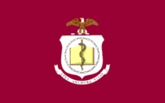
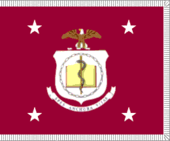
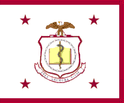
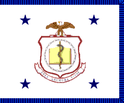
The Department of Health, Education, and Welfare (HEW) was created on April 11, 1953, when Reorganization Plan No. 1 of 1953 became effective. HEW thus became the first new Cabinet-level department since the Department of Labor was created in 1913. The Reorganization Plan abolished the FSA and transferred all of its functions to the Secretary of HEW and all components of the Agency to the Department. The first Secretary of HEW was Oveta Culp Hobby, a native of Texas, who had served as Commander of the Women's Army Corps in World War II and was editor and publisher of the Houston Post. Sworn in on April 11, 1953, as Secretary, she had been FSA Administrator since January 21, 1953.
The six major program-operating components of the new Department were the Public Health Service, the Office of Education, the Food and Drug Administration, the Social Security Administration, the Office of Vocational Rehabilitation, and St. Elizabeth's Hospital. The Department was also responsible for three federally aided corporations: Howard University, the American Printing House for the Blind, and the Columbia Institution for the Deaf (Gallaudet College since 1954).[4]
| Name | Dates of service |
|---|---|
| Oveta Culp Hobby | April 11, 1953 – July 31, 1955 |
| Marion B. Folsom | August 1, 1955 – July 31, 1958 |
| Arthur Flemming | August 1, 1958 – January 19, 1961 |
| Abraham Ribicoff | January 21, 1961 – July 13, 1962 |
| Anthony J. Celebrezze | July 31, 1962 – August 17, 1965 |
| John W. Gardner | August 18, 1965 – March 1, 1968 |
| Wilbur J. Cohen (designate) | March 22, 1968 – May 16, 1968 |
| Wilbur J. Cohen | May 16, 1968 – January 20, 1969 |
| Robert H. Finch | January 21, 1969 – June 23, 1970 |
| Elliot L. Richardson | June 24, 1970 – January 29, 1973 |
| Caspar W. Weinberger | February 12, 1973 – August 8, 1975 |
| Forrest David Mathews | August 8, 1975 – January 20, 1977 |
| Joseph A. Califano Jr. | January 20, 1977 – August 3, 1979 |
| Patricia Roberts Harris | August 3, 1979 – May 4, 1980 |
Department of Health and Human Services
The Department of Health, Education, and Welfare was renamed the Department of Health and Human Services (HHS) in 1979,[5] when its education functions were transferred to the newly created United States Department of Education under the Department of Education Organization Act.[6] HHS was left in charge of the Social Security Administration, agencies constituting the Public Health Service, and Family Support Administration.
In 1995, the Social Security Administration was removed from the Department of Health and Human Services, and established as an independent agency of the executive branch of the United States Government.
HHS is administered by the Secretary of Health and Human Services, who is appointed by the President with the advice and consent of the Senate. The United States Public Health Service (PHS) is the main division of the HHS and is led by the Assistant Secretary for Health. The current Secretary, Alex Azar, assumed office on January 29, 2018, upon his appointment by President Trump and confirmation by the Senate.
The United States Public Health Service Commissioned Corps, the uniformed service of the PHS, is led by the Surgeon General who is responsible for addressing matters concerning public health as authorized by the Secretary or by the Assistant Secretary of Health in addition to his or her primary mission of administering the Commissioned Corps.
Federal, state, and local health departments
There are three tiers of health departments, the federal health department, state health department and local health department. In relation with state and local government, the federal government provides states with funding to ensure that states are able to retain current programs and are able to implement new programs. The coordination between all three health departments is critical to ensure the programs being implemented are well structured and suited to the corresponding level of health department. The health department at state level needs to safeguard good relations with legislators as well as governors in order to acquire legal and financial aid to guarantee the development and enhancements of the programs. Assemblies are set up to guide the relationships between state and local health departments. The state sets up the regulations and health policies whereas the local health departments are the ones implementing the health policies and services.[7][8]
Office of Inspector General
The Office of the Inspector General (OIG) investigates criminal activity for HHS. The special agents who work for OIG have the same title series "1811", training and authority as other federal criminal investigators, such as the FBI, ATF, DEA and Secret Service. However, OIG Special Agents have special skills in investigating white collar crime related to Medicare and Medicaid fraud and abuse. Organized crime has dominated the criminal activity relative to this type of fraud.
HHS-OIG investigates tens of millions of dollars in Medicare fraud each year. In addition, OIG will continue its coverage of all 50 states and the District of Columbia by its multi-agency task forces (PSOC Task Forces) that identify, investigate, and prosecute individuals who willfully avoid payment of their child support obligations under the Child Support Recovery Act.
HHS-OIG agents also provide protective services to the Secretary of HHS, and other department executives as necessary.
In 2002, the department released Healthy People 2010, a national strategic initiative for improving the health of Americans.
With the passage of the Fraud Enforcement and Recovery Act of 2009, and the Affordable Care Act of 2010, the Office of the Inspector General has taken an emboldened stance against healthcare related non-compliance, most notably for violations of Stark Law and the Anti-Kickback Statute.[9]
In 2015, the OIG issued a fraud alert as a warning to hospitals and healthcare systems to monitor and comply with their physician compensation arrangements.[10]
Recent years have seen dramatic increases in both the number and the amounts of Stark Law violation settlements, prompting healthcare experts to identify a need for automated solutions that manage physician arrangements by centralizing necessary information with regard to physician-hospital integration.[11] Contract management software companies such as Meditract provide options for health systems to organize and store physician contracts. Ludi Inc introduced DocTime Log®, an SaaS solution that specifically addresses this growing concern, automating physician time logging in compliance with contract terms to eliminate Stark Law and Anti-Kickback Statute violations.[12]
Criticisms and controversies
In 2016, a published US Senate report revealed that several dozen unaccompanied children from Central America, some as young as fourteen years old, were released from custody to traffickers where they were sexually assaulted, starved or forced to work for little or no pay.[13] The HHS sub agency Office of Refugee Resettlement (ORR) released approximately 90,000 unaccompanied children during 2013-2015 but did not track their whereabouts or properly screen families accepting these children.[14]
To prevent similar episodes, the Homeland Security and Health and Human Services Departments signed a memorandum of understanding in 2016, and agreed to establish joint procedures within one year for dealing with unaccompanied migrant children. As of 2018 they have failed to do so. Between October and December 2017, officials from ORR tried to contact 7,635 children and their sponsors. From these calls, officials learned that 6,075 children remained with their sponsors. Twenty-eight had run away, five had been removed from the United States and fifty-two had relocated to live with a non sponsor. However, officials have lost track of 1,475 children.[15] ORR claims it is not legally liable for the safety and status of the children once released from custody.[16]
Strengthening Communities Fund
In June 2010, the Department of Health and Human Services created the Strengthening Communities Fund[17] as part of the American Recovery and Reinvestment Act. The fund was appropriated $50 million to be given as grants to organizations in the United States who were engaged in Capacity Building programs. The grants were given to two different types of capacity builders:
- State, Local and Tribal governments engaged in capacity building: grants will go to state local and tribal governments to equip them with the capacity to more effectively partner with faith-based or non-faith based nonprofit organizations.[18]
- Capacity building in this program will involve education and outreach that catalyzes more involvement of nonprofit organizations in economic recovery
and building up nonprofit organization's abilities to tackle economic problems. State, Local and Tribal governments can receive up to $250,000 in two year grants
- Nonprofit Social Service Providers engaged in capacity building: they will make grants available to nonprofit organizations who can assist other nonprofit organizations in organizational development, program development, leadership, and evaluations. Nonprofits can receive up to $1 million in two year grants.
Organization
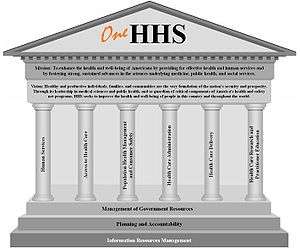
The Department of Health and Human Services is led by the United States Secretary of Health and Human Services, a member of the United States Cabinet appointed by the President of the United States with the consent of the United States Senate. The Secretary is assisted in managing the Department by the Deputy Secretary of Health and Human Services, who is also appointed by the President. The Secretary and Deputy Secretary are further assisted by seven Assistant Secretaries, who serve as top Departmental administrators.
As of Jan. 20, 2018, this is the top level of the organizational chart. HHS provides further organizational detail on its website.
Several agencies within HHS are components of the Public Health Service (PHS), as noted below.
- Secretary, Deputy Secretary, and Chief of Staff
- The Executive Secretariat (ES)
- Office of Intergovernmental and External Affairs (IEA)
- Headquarters Staff
- Regional Offices
- Office of Human Resources
- Office of Health Reform (OHR)
- Office of the Secretary
- Office of the Assistant Secretary for Administration (ASA)
- Office of the Assistant Secretary for Financial Resources (ASFR)
- Office of the Assistant Secretary for Health (OASH)
- Office of the Assistant Secretary for Legislation (ASL)
- Office of the Assistant Secretary for Planning and Evaluation (ASPE)
- Office of the Assistant Secretary for Preparedness and Response (ASPR) - PHS component
- Office of the Assistant Secretary for Public Affairs (ASPA)
- Office for Civil Rights (OCR)
- Departmental Appeals Board (DAB)
- Office of the General Counsel (OGC)
- Office of Global Affairs (OGA) - PHS component
- Office of Inspector General (OIG)
- Office of Medicare Hearings and Appeals (OMHA)
- Office of the National Coordinator for Health Information Technology (ONC)
- Operating Divisions
- Administration for Children and Families (ACF)
- Administration for Community Living (ACL)
- Agency for Healthcare Research and Quality (AHRQ) - PHS component
- Agency for Toxic Substances and Disease Registry (ATSDR) - PHS component
- Centers for Disease Control and Prevention (CDC) - PHS component
- Centers for Medicare & Medicaid Services (CMS)
- Food and Drug Administration (FDA) - PHS component
- Health Resources and Services Administration (HRSA) - PHS component
- Indian Health Service (IHS) - PHS component
- National Institutes of Health (NIH) - PHS component
- Substance Abuse and Mental Health Services Administration (SAMHSA) - PHS component
Budget and finances
The Department of Health and Human Services was authorized a budget for fiscal year 2015 of $1.020 trillion. The budget authorization is broken down as follows:[19]
| Program | Funding (in billions) |
|---|---|
| Management and Finance | |
| Departmental Management | $1.4 |
| Public Health and Social Services Emergency Fund | $1.4 |
| Operating Divisions | |
| Food and Drug Administration | $2.6 |
| Health Resources and Services Administration | $10.4 |
| Indian Health Service | $4.8 |
| Centers for Disease Control and Prevention | $6.7 |
| National Institutes of Health | $30.4 |
| Substance Abuse and Mental Health Services Administration | $3.4 |
| Agency for Healthcare Research and Quality | $0.4 |
| Centers for Medicare and Medicaid Services | $906.8 |
| Administration for Children and Families | $51.3 |
| Administration for Community Living | $2.1 |
| TOTAL | 1,020.3 |
Former operating divisions and agencies
- Social Security Administration, made independent in 1995.
- Health Care Financing Administration, renamed to Centers for Medicare and Medicaid Services
Programs
The Department of Health and Human Services' administers 115 programs across its 11 operating divisions.[20] The United States Department of Health and Human Services (HHS) aims to "protect the health of all Americans and provide essential human services, especially for those who are least able to help themselves."[21] These federal programs consist of social service programs, civil rights and healthcare privacy programs, disaster preparedness programs, and health related research. HHS offers a variety of social service programs geared toward persons with low income, disabilities, military families, and senior citizens.[22] Healthcare rights are defined under HHS in the Health Insurance Portability and Accountability Act (HIPAA) which protect patient’s privacy in regards to medical information, protects workers health insurance when unemployed, and sets guidelines surrounding some health insurance. HHS collaborates with the Office of the Assistant Secretary for Preparedness and Response and Office of Emergency Management to prepare and respond to health emergencies.[23][24] A broad array of health related research is supported or completed under the HHS; secondarily under HHS, the Health Resources & Service Administration houses data warehouses and makes health data available surrounding a multitude of topics.[25] [26] HHS also has vast offering of health related resources and tools to help educate the public on health policies and pertinent population health information. Some examples of available resources include disease prevention, wellness, health insurance information, as well as links to healthcare providers and facilities, meaningful health related materials, public health and safety information.[27][28][29][30][31][32]
Some highlights include:
- Health and social science research
- Preventing disease, including immunization services
- Assuring food and drug safety
- Medicare (health insurance for elderly and disabled Americans) and Medicaid (health insurance for low-income people)
- Health information technology
- Financial assistance and services for low-income families
- Improving maternal and infant health, including a Nurse Home Visitation to support first-time mothers
- Head Start (pre-school education and services)
- Faith-based and community initiatives
- Preventing child abuse and domestic violence
- Substance abuse treatment and prevention
- Services for older Americans, including home-delivered meals
- Comprehensive health services for Native Americans
- Assets for Independence
- Medical preparedness for emergencies, including potential terrorism
- Child support enforcement[33]
Freedom of Information Act processing performance
In the latest Center for Effective Government analysis of 15 federal agencies which receive the most Freedom of Information Act (United States) (FOIA) requests published in 2015 (using 2012 and 2013 data, the most recent years available), the DHHS ranked second to last, earning an F by scoring 57 out of a possible 100 points, largely due to a low score on its particular disclosure rules. It had deteriorated from a D- in 2013.[34]
Health care reform
The 2010 United States federal budget established a reserve fund of more than $630 billion over 10 years to finance fundamental reform of the health care system.[35]
Related legislation
- 1946: Hospital Survey and Construction Act (Hill-Burton Act) PL 79-725
- 1949: Hospital Construction Act PL 81-380
- 1950: Public Health Services Act Amendments PL 81-692
- 1955: Poliomyelitis Vaccination Assistance Act PL 84-377
- 1956: Health Research Facilities Act PL 84-835
- 1960: Social Security Amendments (Kerr-Mill aid) PL 86-778
- 1961: Community Health Services and Facilities Act PL 87-395
- 1962: Public Health Service Act PL 87-838
- 1962: Vaccination Assistance PL 87-868
- 1963: Mental Retardation Facilities Construction Act/Community Mental Health Centers Act PL 88-164
- 1964: Nurse Training Act PL 88-581
- 1965: Community Health Services and Facilities Act PL 89-109
- 1965: Medicare PL 89-97
- 1965: Mental Health Centers Act Amendments PL 89-105
- 1965: Heart Disease, Cancer, and Stroke Amendments PL 89-239
- 1966: Comprehensive Health Planning and Service Act PL 89-749
- 1970: Community Mental Health Service Act PL 91-211
- 1970: Family Planning Services and Population Research Act PL 91-572
- 1970: Lead-Based Paint Poisoning Prevention Act PL 91-695
- 1971: National Cancer Act PL 92-218
- 1974: Research on Aging Act PL 93-296
- 1974: National Health Planning and Resources Development Act PL 93-641
- 1979: Department of Education Organization Act (removed education functions) PL 96-88
- 1987: Department of Transportation Appropriations Act PL 100-202
- 1988: Medicare Catastrophic Coverage Act PL 100-360
- 1989: Department of Transportation and Related Agencies Appropriations Act PL 101-164
- 1996: Health Insurance Portability and Accountability Act PL 104-191
- 2000: Child Abuse Reform and Enforcement Act P.L. 106-177
- 2010: Patient Protection and Affordable Care Act PL 111-148
See also
- American Recovery and Reinvestment Act (ARRA)
- Early Head Start
- Emergency Care Coordination Center
- Global Health Security Initiative
- Head Start
- Health information technology
- Health professional
- Healthy People 2010
- Human experimentation in the United States
- Rural health
- Stark Law
- Supporting Healthy Marriage Project
- William R. Steiger
Notes and references
- ↑ (ASFR), Office of Budget (OB), Assistant Secretary for Financial Resources (March 27, 2014). "2015 Budget in Brief". Archived from the original on May 2, 2015.
- ↑ "About HHS". U.S. Department of Health & Human Services. Archived from the original on November 13, 2013. Retrieved November 13, 2013.
- 1 2 3 "Department of Health, Education, and Welfare. A Common Thread of Service: An Historical Guide to HEW. DHEW Publication No. (OS) 73-45". July 1, 1972. Archived from the original on February 14, 2014. Retrieved January 9, 2014.
- 1 2 3 4 5 6 Preliminary inventory of the records of the Department of Health, Education, and Welfare (PI 181, Record Group 235), National Archives and Records Service, 1975.
- ↑ "Office of the Law Revision Counsel, U.S. House of Representatives, Title 20, Section 3508". house.gov. Archived from the original on June 19, 2012. Retrieved January 7, 2012.
- ↑ Full text of the Department of Education Organization Act Archived May 7, 2018, at the Wayback Machine., P.L. 96-88.
- ↑ "Policy Statement Development Process". American Public Health Association. Archived from the original on October 1, 2017. Retrieved September 30, 2017.
- ↑ "The State Health Department". American public health department. Archived from the original on September 17, 2017. Retrieved September 30, 2017.
- ↑ "Becker's Hospital Review". Archived from the original on August 29, 2015.
- ↑ "Becker's Hospital Review" (PDF). Archived (PDF) from the original on July 1, 2015.
- ↑ "Becker's Hospital Review". Archived from the original on July 14, 2015.
- ↑ "Ludi, Inc. Closes $1M in Series A Financing". Business Wire. Archived from the original on September 10, 2015.
- ↑ "Almost 1,500 Migrant Children Placed in Homes by the U.S. Government Went Missing Last Year". Time. Retrieved 2018-05-26.
- ↑ "U.S. Placed Immigrant Children With Traffickers, Report Says". The New York Times. 2016-01-28. ISSN 0362-4331. Retrieved 2018-05-26.
- ↑ "Federal Agencies Lost Track of Nearly 1,500 Migrant Children Placed With Sponsors". The New York Times. 2018-04-26. ISSN 0362-4331. Retrieved 2018-05-26.
- ↑ CNN, Dakin Andone,. "US lost track of 1,500 immigrant children, but says it's not 'legally responsible'". CNN. Retrieved 2018-05-26.
- ↑ "Strengthening Communities Fund". U.S. Department of Health and Human Services. Archived from the original on February 1, 2013.
- ↑ "Strengthening Communities Fund: American Recovery and Reinvestment Act Implementation Plan" (PDF). U.S. Department of Health and Human Services. May 24, 2010. Archived from the original (PDF) on January 16, 2013.
- ↑ 2015 Department of Health and Human Services Budget-in-Brief Archived March 26, 2015, at the Wayback Machine., pg 10, United States Department of Health and Human Services, Accessed July 14, 2015.
- ↑ Budget and Performance Archived April 28, 2015, at the Wayback Machine.. HHS.gov. Retrieved on April 15, 2014.
- ↑ (ASPA), Assistant Secretary for Public Affairs (January 29, 2015). "Programs & Services". HHS.gov. Archived from the original on September 17, 2017.
- ↑ (ASPA), Digital Communications Division (DCD), Assistant Secretary for Public Affairs (February 26, 2015). "Social Services". hhs.gov. Archived from the original on September 17, 2017.
- ↑ "Preparedness Home - PHE". www.phe.gov. Archived from the original on September 19, 2017.
- ↑ "Office of Emergency Management - PHE". www.phe.gov. Archived from the original on September 7, 2017.
- ↑ (ASPA), Digital Communications Division (DCD), Assistant Secretary for Public Affairs (February 26, 2015). "Research". hhs.gov. Archived from the original on September 17, 2017.
- ↑ "HealthData.gov". www.healthdata.gov. Archived from the original on September 17, 2017.
- ↑ (ASPA), Assistant Secretary for Public Affairs (January 29, 2015). "Programs & Services". HHS.gov. Archived from the original on September 17, 2017.
- ↑ (ASPA), Digital Communications Division (DCD), Assistant Secretary for Public Affairs (February 26, 2015). "Prevention & Wellness". hhs.gov. Archived from the original on September 17, 2017.
- ↑ (ASPA), Digital Communications Division (DCD), Assistant Secretary for Public Affairs (February 26, 2015). "Health Insurance". hhs.gov. Archived from the original on September 17, 2017.
- ↑ (ASPA), Digital Communications Division (DCD), Assistant Secretary for Public Affairs (April 9, 2015). "Providers & Facilities". hhs.gov. Archived from the original on September 17, 2017.
- ↑ (ASPA), Digital Communications Division (DCD), Assistant Secretary for Public Affairs (March 3, 2015). "Featured Topic Sites". hhs.gov. Archived from the original on September 17, 2017.
- ↑ (ASPA), Digital Communications Division (DCD), Assistant Secretary for Public Affairs (February 26, 2015). "Public Health & Safety". hhs.gov. Archived from the original on September 17, 2017.
- ↑ "Home - Office of Child Support Enforcement - Administration for Children and Families". Archived from the original on August 18, 2015.
- ↑ Making the Grade: Access to Information Scorecard 2015 Archived March 13, 2016, at the Wayback Machine. March 2015, 80 pages, Center for Effective Government, retrieved March 21, 2016.
- ↑ "Archived copy" (PDF). Archived (PDF) from the original on March 6, 2009. Retrieved March 6, 2009.
External links
| Wikimedia Commons has media related to United States Department of Health and Human Services. |
